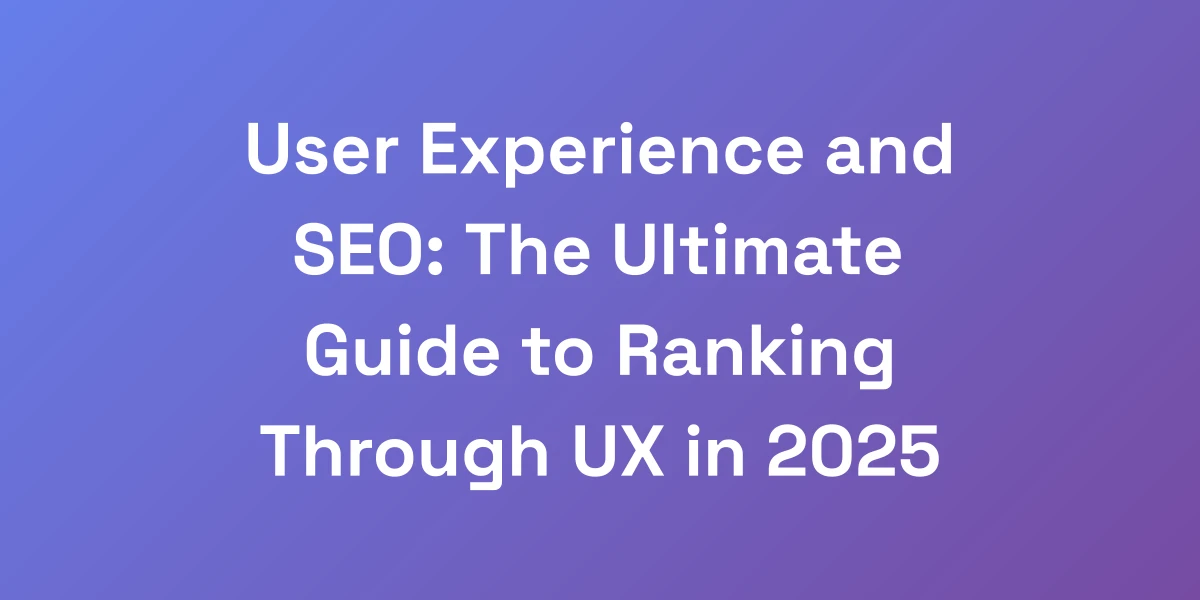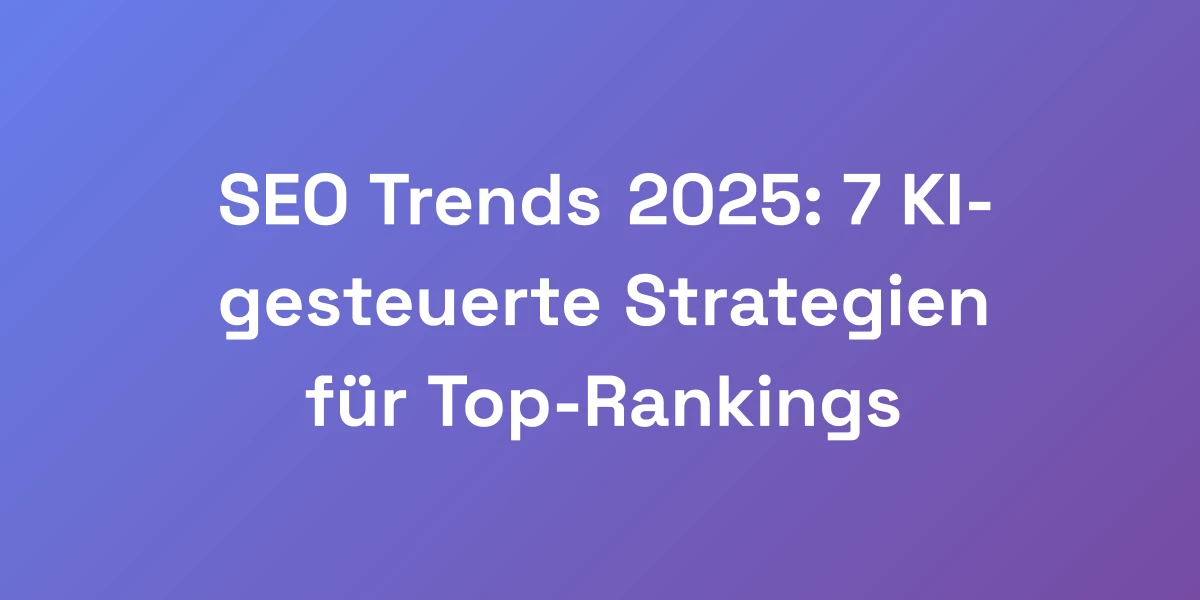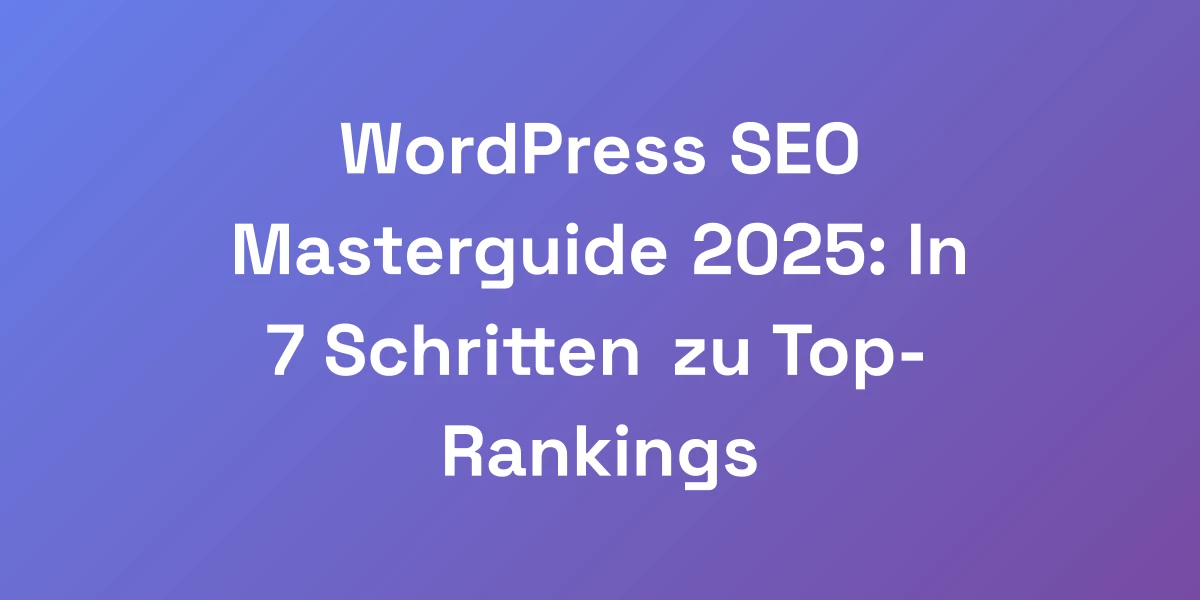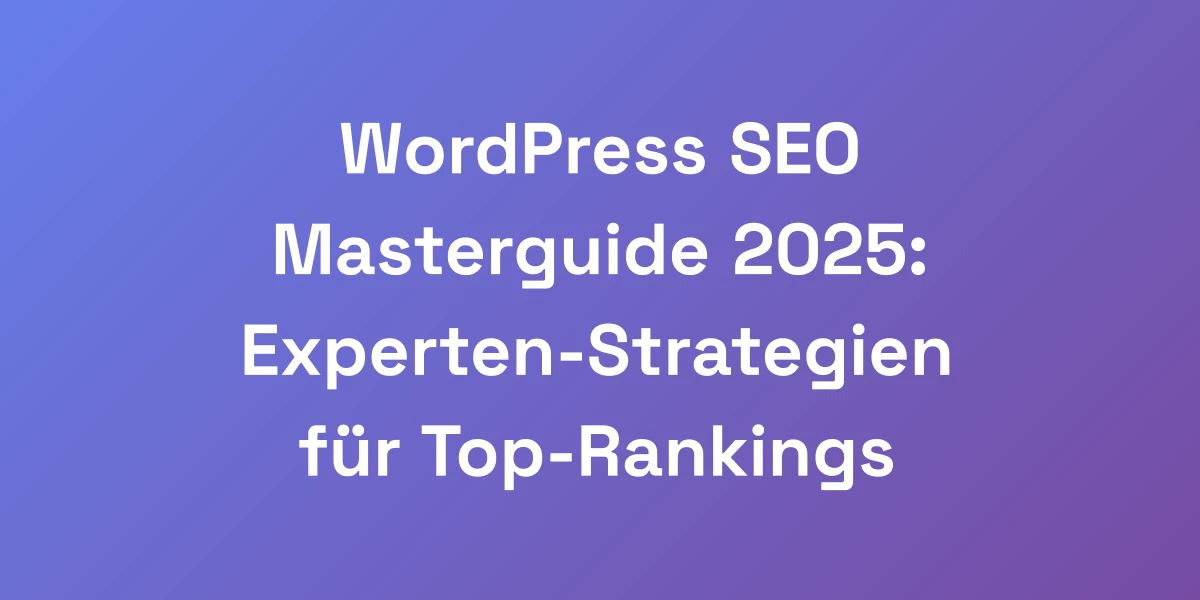
SEO Strategist: The Architect Behind Top-Ranking Websites in 2025
Apr 13, 2025 | By [email protected]
Introduction
Imagine a digital landscape where websites rise and fall in prominence with the precision of skyscrapers in a metropolis. Ever wondered who designs these towering online presences that dominate search engine results? Enter the SEO strategist—the unsung heroes crafting the blueprints for digital success.
In the ever-evolving world of search engine optimization, the role of an SEO strategist has transformed dramatically. Gone are the days of mere keyword stuffing and backlink stacking. Today, these professionals are data-driven storytellers, seamlessly blending technical acumen with creative prowess to navigate the intricate web of algorithms and user behavior.
But what exactly challenges do modern SEO strategists face? How do they stay ahead in a field that grows exponentially, as evidenced by the global SEO software market projected to reach USD 154.60 billion by 2030? Let’s delve into the multifaceted role of an SEO strategist in 2025 and uncover the strategies that place websites at the pinnacle of search results.
The Evolution and Impact of Modern SEO Strategists
In today’s digital landscape, an SEO strategist has evolved far beyond simple keyword optimization. These digital architects are now data-driven storytellers who blend technical expertise with creative content strategy. They navigate the complex intersection of user experience, search engine algorithms, and business objectives to create sustainable organic growth. Modern SEO strategists leverage artificial intelligence, predictive analytics, and user behavior patterns to craft strategies that don’t just chase rankings but build lasting digital authority.
From Keywords to User Intent: The Transformation of SEO
The foundational shift in SEO from focusing solely on keywords to understanding user intent marks a significant transformation. It’s not about what users are searching for, but why they’re searching for it.
- Understanding Context: Modern SEO strategists analyze the context behind search queries, ensuring content aligns with the user’s intent, whether informational, navigational, or transactional.
- Semantic Search: Utilizing semantic search principles, strategists ensure that content is not only keyword-rich but also contextually relevant, enhancing the chances of appearing in featured snippets and Google’s Knowledge Graph.
- User Journey Mapping: By mapping the user journey, SEO strategists can create content that meets users at various stages of their decision-making process, fostering engagement and conversion.
For example, consider a user searching for “best SEO tools 2025.” Beyond listing tools, a strategic approach involves reviewing features, comparing performance metrics, and offering actionable insights, thus addressing the user’s comprehensive needs.
The Rise of AI-Powered SEO Strategy
Artificial Intelligence has revolutionized SEO strategies, offering unprecedented capabilities in data analysis and predictive modeling.
- Data Analysis: AI-driven tools can process vast amounts of data, identifying trends and patterns that inform strategic decisions with remarkable accuracy.
- Content Optimization: AI assists in optimizing content by suggesting relevant topics, keywords, and even generating content ideas that resonate with target audiences.
- Predictive Analytics: By forecasting future trends, SEO strategists can proactively adjust their strategies to maintain top rankings in an ever-changing digital environment.
Take, for instance, the use of machine learning algorithms that predict which content pieces are likely to perform well based on historical data, allowing strategists to prioritize high-potential topics and formats.
Key Performance Metrics Modern SEO Strategists Track
Success in SEO is measured through a variety of key performance indicators (KPIs) that reflect both user engagement and technical performance.
- Organic Traffic: The volume of users arriving at a website through organic search is a primary indicator of SEO effectiveness.
- Conversion Rates: Tracking how many visitors take desired actions—such as making a purchase or signing up for a newsletter—reveals the quality of traffic being driven to the site.
- Bounce Rate: A high bounce rate might indicate that the content isn’t meeting user expectations, prompting strategists to refine their approach.
- Page Load Speed: Ensuring fast load times is crucial for both user experience and search engine rankings, especially with Google’s Core Web Vitals benchmarks.
- Keyword Rankings: Monitoring positions of targeted keywords helps in assessing the visibility and competitiveness of the content.
For example, an SEO strategist might notice a decline in keyword rankings despite increased traffic, leading to an investigation into possible algorithm changes or shifts in user behavior.
Impact on Business Revenue and Growth
The direct correlation between effective SEO strategies and business growth is undeniable. With the SEO services market expected to reach $194.6 billion by 2029, investments in SEO are paying substantial dividends.
- Increased Visibility: Higher search rankings result in greater visibility, leading to increased brand recognition and trust.
- Cost-Effective Marketing: Compared to paid advertising, SEO offers a sustainable and affordable SEO services that generate organic traffic and leads.
- Revenue Growth: Higher traffic and improved conversion rates naturally lead to increased sales and revenue, making SEO a critical component of business growth strategies.
Consider a mid-sized e-commerce business that prioritizes SEO. By optimizing product pages and creating valuable content, they see a 30% increase in organic traffic, which translates to a 20% rise in sales within six months.
Case Studies of Successful SEO Transformations
Examining real-life examples of successful SEO transformations provides valuable insights into effective strategies.
- Example 1: E-commerce Optimization – A fashion retailer revamped their SEO strategy by focusing on mobile-first indexing and optimizing for voice search. Result? A 50% increase in mobile traffic and a 35% boost in sales.
- Example 2: Content-Driven Growth – A tech blog leveraged advanced entity-based SEO techniques, enhancing their content’s relevance and authority. This led to a 40% increase in organic traffic and significant improvements in user engagement metrics.
These case studies highlight the importance of adapting to modern SEO trends and the tangible benefits of a well-executed SEO strategy.
Core Skills and Tools of Elite SEO Strategists
The toolkit of a successful SEO strategist extends far beyond traditional optimization techniques. Today’s professionals must master advanced analytics platforms, machine learning applications, and sophisticated tracking tools. They need to understand both the technical architecture of websites and the psychological aspects of user behavior. The most successful strategists combine data analysis capabilities with creative problem-solving skills, making them invaluable assets in the digital marketing ecosystem.
Essential Technical SEO Skills
A deep understanding of technical SEO is non-negotiable for modern strategists. This includes:
- Website Architecture: Designing a logical and user-friendly site structure that facilitates both user navigation and search engine crawling.
- HTML and CSS Proficiency: Knowing how to effectively use HTML tags and CSS to enhance page performance and SEO.
- Schema Markup: Implementing structured data to help search engines understand the content context, improving visibility in rich snippets.
- Responsive Design: Ensuring websites perform optimally across all devices, particularly mobile, to align with mobile-first indexing.
For instance, an SEO strategist might employ schema markup to highlight product details, reviews, and pricing, thereby increasing the chances of appearing in rich snippets and enhancing user engagement.
Content Strategy and Creation Expertise
Content remains king in SEO, and strategists must excel in creating and curating high-quality content that resonates with their audience.
- Topic Research: Identifying relevant and trending topics that align with user intent and business goals.
- Content Optimization: Ensuring that content is optimized for keywords while maintaining readability and value for the user.
- Multimedia Integration: Incorporating images, videos, and infographics to enhance content engagement and shareability.
- Content Auditing: Regularly reviewing and updating existing content to ensure it remains relevant and optimized for current SEO best practices.
For example, creating in-depth guides that address specific user queries can position a website as an authoritative source, driving both traffic and trust.
Data Analysis and Interpretation
The ability to analyze and interpret data is crucial for making informed SEO decisions.
- Google Analytics: Tracking and analyzing website performance metrics to understand user behavior and identify improvement areas.
- SEO Tools: Utilizing tools like Ahrefs, SEMrush, and Moz for keyword research, backlink analysis, and competitive benchmarking.
- Reporting: Creating comprehensive reports that translate data insights into actionable strategies for stakeholders.
- A/B Testing: Conducting experiments to determine the most effective SEO tactics and content strategies.
For example, analyzing bounce rates across different pages can help identify content that isn’t meeting user expectations, prompting a strategy revision to enhance engagement.
Project Management and Communication
Effective project management and communication skills ensure that SEO initiatives are executed smoothly and collaboratively.
- Strategic Planning: Developing comprehensive SEO strategies that align with broader business objectives.
- Team Collaboration: Working seamlessly with content creators, designers, developers, and marketing teams to implement SEO strategies.
- Client Communication: Clearly conveying SEO insights, progress, and results to clients or stakeholders through structured reporting and presentations.
- Time Management: Prioritizing tasks and managing timelines to ensure timely execution of SEO campaigns.
For instance, coordinating with the web development team to implement technical SEO fixes requires clear communication and effective project management to ensure smooth transitions and minimal disruptions.
Emerging Technologies and Tools
Staying updated with emerging technologies and tools is vital for maintaining a competitive edge.
- AI and Machine Learning: Leveraging AI tools for predictive analytics, content generation, and advanced data insights.
- Voice Search Optimization Tools: Adapting strategies to cater to the growing trend of voice-based searches on devices like smartphones and smart speakers.
- Advanced SEO Platforms: Utilizing sophisticated platforms that offer comprehensive SEO solutions, from keyword research to performance tracking.
- Automation Tools: Automating repetitive tasks such as reporting, keyword tracking, and link monitoring to streamline workflows.
For example, employing machine learning algorithms to analyze user behavior can provide deeper insights into content performance, enabling more precise adjustments to SEO strategies.
Professional Development Pathways
The field of SEO is dynamic, necessitating continuous learning and professional development.
- Certifications: Pursuing certifications from industry leaders like Google, SEMrush, and HubSpot to validate skills and knowledge.
- Workshops and Webinars: Participating in specialized training sessions to stay abreast of the latest SEO trends and techniques.
- Networking: Engaging with industry communities and attending conferences to exchange ideas and learn from peers.
- Continuous Learning: Staying updated with the latest research, case studies, and algorithm updates to inform and refine SEO strategies.
For instance, attending an advanced SEO workshop on entity-based SEO can equip an strategist with the latest techniques to optimize for Google’s Knowledge Graph and featured snippets.
Advanced SEO Strategies for 2025 and Beyond
The landscape of search engine optimization is rapidly evolving, with cutting-edge strategies emerging almost daily. Modern SEO strategists must stay ahead of trends like mobile-first indexing, mobile-first indexing, and semantic search understanding. They’re increasingly focusing on E-E-A-T (Experience, Expertise, Authoritativeness, and Trustworthiness) principles while adapting to new search engine algorithms that prioritize user experience and content quality over traditional ranking factors. Partnering with an award-winning digital marketing agency like 1SEO Digital Agency can provide the expertise and resources needed to implement these advanced strategies effectively.
Voice Search and Conversational AI Optimization
With the proliferation of voice-activated devices, optimizing for voice search has become imperative.
- Conversational Keywords: Incorporating natural language and long-tail keywords that reflect how users speak rather than type.
- Featured Snippets: Structuring content to appear in featured snippets, which are often the source for voice search answers.
- Local SEO: Enhancing local SEO strategies, as many voice searches are location-specific.
For example, optimizing for phrases like “Where can I find the best Italian restaurant near me?” ensures that content appears in responses to local voice queries, driving both traffic and conversions.
Mobile-First Strategy Implementation
With Google’s completion of mobile-first indexing, ensuring that websites perform flawlessly on mobile devices is no longer optional.
- Responsive Design: Implementing designs that adapt seamlessly to different screen sizes and devices.
- Page Speed: Enhancing mobile load times to meet Core Web Vitals benchmarks, which significantly impact rankings.
- User Experience: Focusing on intuitive navigation and interactive elements tailored for mobile users.
Take a news website, for instance, that prioritized mobile optimization by streamlining its layout and improving load times. As a result, mobile traffic surged by 40%, and user engagement metrics saw a substantial increase.
Entity-Based SEO Techniques
Entity-based SEO focuses on the relationship between concepts, people, places, and things to create a more interconnected and authoritative web presence.
- Structured Data: Utilizing schema markup to define entities and their relationships within content, enhancing search engine understanding.
- Content Clusters: Creating interconnected content around core entities, establishing a network of related information that reinforces authority on a subject.
- Knowledge Graph Optimization: Enhancing content to align with Google’s Knowledge Graph, increasing the likelihood of appearing in rich results.
For example, an SEO strategist for a healthcare website might create comprehensive content clusters around specific medical conditions, linking related articles, treatments, and resources, thereby strengthening the site’s authority and improving its visibility in search results.
Core Web Vitals Optimization
Core Web Vitals are crucial metrics that assess the real-world performance of a website, directly influencing search rankings.
- Largest Contentful Paint (LCP): Ensuring that the main content loads within 2.5 seconds to provide a positive user experience.
- Interaction to Next Paint (INP): Minimizing delays between user interactions and the website’s response to improve usability.
- Cumulative Layout Shift (CLS): Reducing unexpected layout shifts to maintain content stability during page load.
For instance, an online retailer might optimize image sizes and leverage browser caching to improve LCP, while also refining CSS to prevent layout shifts, resulting in enhanced user satisfaction and higher search rankings.
Local SEO and Multi-Location Strategy
Local SEO remains a vital strategy for businesses targeting geographically specific audiences.
- Google My Business Optimization: Ensuring accurate and comprehensive business listings to improve local search visibility.
- Local Citations: Building consistent mentions of the business across online directories and local platforms.
- Localized Content: Creating content tailored to local events, news, and interests to engage the regional audience.
For example, a chain of coffee shops might optimize each location’s Google My Business profile, engage with local communities through tailored blog posts, and ensure consistent information across all directories, thereby enhancing local search performance and driving foot traffic.
International SEO Considerations
For businesses operating in multiple regions, international SEO ensures that their content resonates across diverse markets.
- Hreflang Tags: Implementing hreflang tags to indicate language and regional targeting, preventing content duplication issues.
- Localized Keyword Research: Understanding regional search behaviors and optimizing content with relevant local keywords.
- Cultural Sensitivity: Adapting content to respect cultural nuances and preferences, enhancing relatability and engagement.
For instance, an international e-commerce platform might create region-specific landing pages with localized content, pricing, and promotions, ensuring a tailored user experience that meets the unique needs of each market.
Measuring and Reporting SEO Success
Modern SEO strategists must excel at demonstrating ROI through comprehensive analytics and reporting. They focus on meaningful metrics that directly impact business goals, moving beyond simple ranking reports to show true business value. This includes tracking user engagement metrics, conversion rates, and revenue attribution from organic search, while also monitoring technical SEO health and competitive positioning in the market.
Key Performance Indicators (KPIs)
Identifying and tracking the right KPIs is essential for measuring SEO success.
- Organic Traffic: The total number of visitors arriving via search engines reflects the overall effectiveness of SEO efforts.
- Conversion Rate: The percentage of visitors who complete desired actions, such as purchases or sign-ups, indicates the quality of traffic and content.
- Keyword Rankings: Monitoring the positions of target keywords helps assess visibility and competitiveness.
- Backlink Quality: Evaluating the authority and relevance of backlinks ensures the site’s credibility and enhances search rankings.
- Engagement Metrics: Metrics like time on page, pages per session, and bounce rate provide insights into user interaction and content effectiveness.
For example, a noticeable increase in organic traffic paired with a steady or rising conversion rate signifies that SEO strategies are successfully attracting and engaging the right audience.
ROI Calculation Methods
Calculating the return on investment (ROI) for SEO campaigns is critical for demonstrating value to stakeholders.
- Revenue Attribution: Assigning revenue generated from organic search to specific SEO activities helps quantify their financial impact.
- Investment Comparison: Comparing the costs invested in SEO (tools, personnel, campaigns) against the revenue generated, especially when utilizing affordable small business SEO solutions, provides a clear ROI picture.
For instance, if an SEO campaign costs $20,000 and generates $120,000 in conversions, the ROI would be calculated as (($120,000 – $20,000) / $20,000) = 500%, showcasing a significant return on investment.
Reporting Tools and Dashboards
Utilizing specialized tools and custom dashboards streamlines the reporting process, making data accessible and actionable.
- Google Analytics: Offers comprehensive insights into website traffic, user behavior, and conversion metrics.
- SEMrush and Ahrefs: Provide in-depth SEO analytics, including keyword tracking, backlink analysis, and competitive benchmarking.
- Custom Dashboards: Creating tailored dashboards that aggregate key metrics in one place for easy monitoring and reporting.
For example, an SEO strategist might set up a dashboard that highlights key metrics like organic traffic growth, top-performing keywords, and conversion rates, providing a clear and concise overview of campaign performance.
Competitive Analysis Frameworks
Understanding and analyzing competitors’ SEO strategies offers valuable insights for refining one’s own approach.
- Keyword Gap Analysis: Identifying keywords that competitors are ranking for but your site is not, to target new opportunities.
- Backlink Analysis: Evaluating the quality and quantity of competitors’ backlinks to identify potential link-building opportunities.
- Content Strategy Review: Analyzing competitors’ content strategies to uncover gaps and areas for improvement in your own content.
For instance, by conducting a keyword gap analysis, an SEO strategist might discover that competitors are targeting specific long-tail keywords that their site hasn’t optimized for, presenting new avenues to capture search traffic.
Client Communication Strategies
Effective communication with clients ensures that SEO progress and results are transparent and comprehensible.
- Regular Updates: Providing consistent updates on SEO milestones, performance metrics, and ongoing strategies keeps clients informed and engaged.
- Clear Reporting: Presenting data in an easy-to-understand format, highlighting key achievements and areas for improvement.
- Strategic Recommendations: Offering actionable insights and strategic recommendations based on data analysis helps clients see the value of SEO efforts.
For example, an SEO strategist might present a monthly report that includes a summary of key metrics, notable improvements, and strategic next steps, ensuring clients understand the impact and direction of their SEO campaigns.
Performance Forecasting Models
Predicting future performance based on current data and trends allows for proactive strategy adjustments.
- Trend Analysis: Analyzing historical data to identify trends and forecast future traffic and rankings.
- Scenario Planning: Creating different scenarios based on potential changes in SEO strategies or external factors, enabling preparedness for various outcomes.
- Predictive Modeling: Using advanced analytics to predict the impact of specific SEO actions on future performance metrics.
For example, using trend analysis, an SEO strategist might forecast a 20% increase in organic traffic over the next quarter based on current growth rates and planned content expansions, allowing for strategic planning and resource allocation.
Conclusion
As we navigate the complexities of digital marketing in 2025, the role of the SEO strategist stands out as pivotal in shaping the online success of businesses. These professionals bridge the gap between technical prowess and creative strategy, ensuring websites not only achieve high rankings but also deliver genuine value to users.
The evolution of SEO strategies, driven by advancements in AI, a deeper understanding of user intent, and the integration of E-E-A-T principles, underscores the dynamic nature of this field. By mastering a diverse set of skills and leveraging cutting-edge tools, elite SEO strategists are equipped to drive sustainable growth and adapt to the ever-changing digital landscape.
Are you ready to elevate your website’s performance and secure a top-ranking position? Embrace the expertise of a skilled SEO strategist and witness the transformative impact on your digital presence. Let’s continue this conversation—share your thoughts and experiences on how SEO has shaped your business growth, and let’s explore the future of digital optimization together. For inspiration, check out some SEO quotes to boost your ranking.
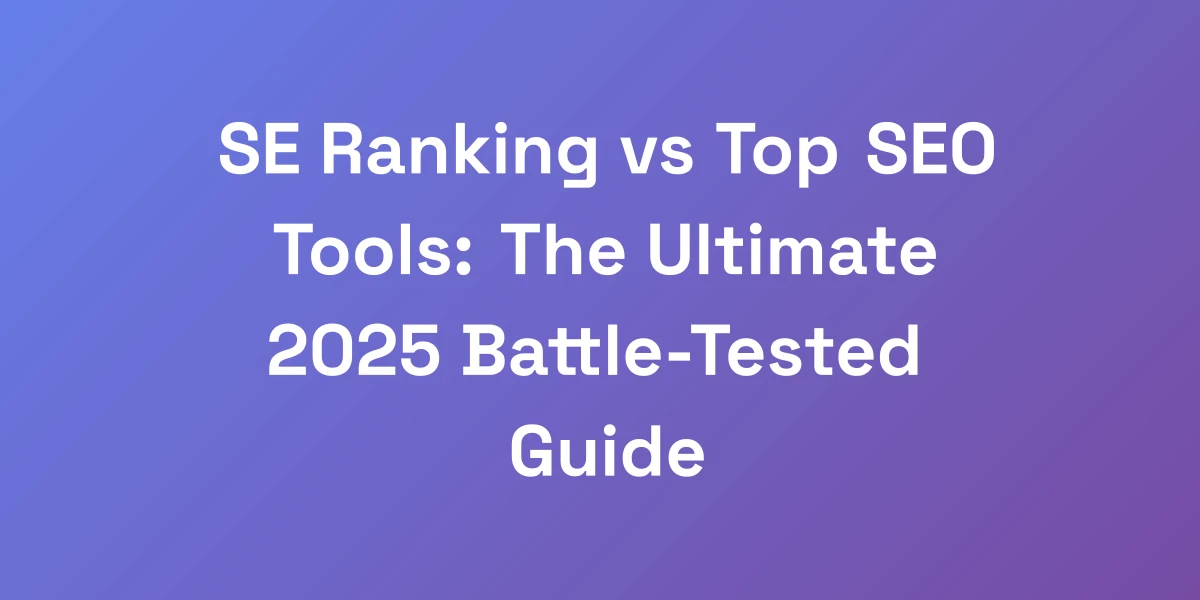
![Guaranteed SEO Services: The Truth Behind Rankings Promises [2025]](https://autoseo.eazyseo.co/wp-content/uploads/2025/03/Guaranteed-SEO-Services-The-Truth-Behind-Rankings.webp)
